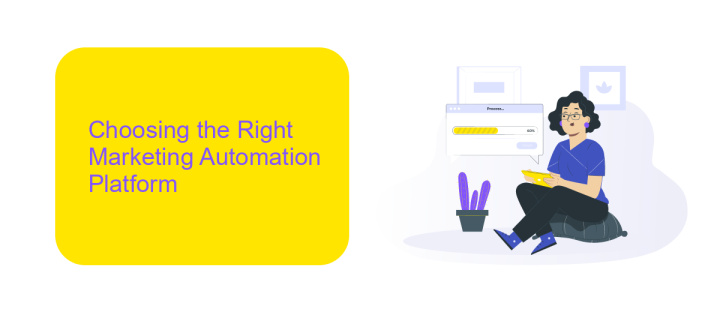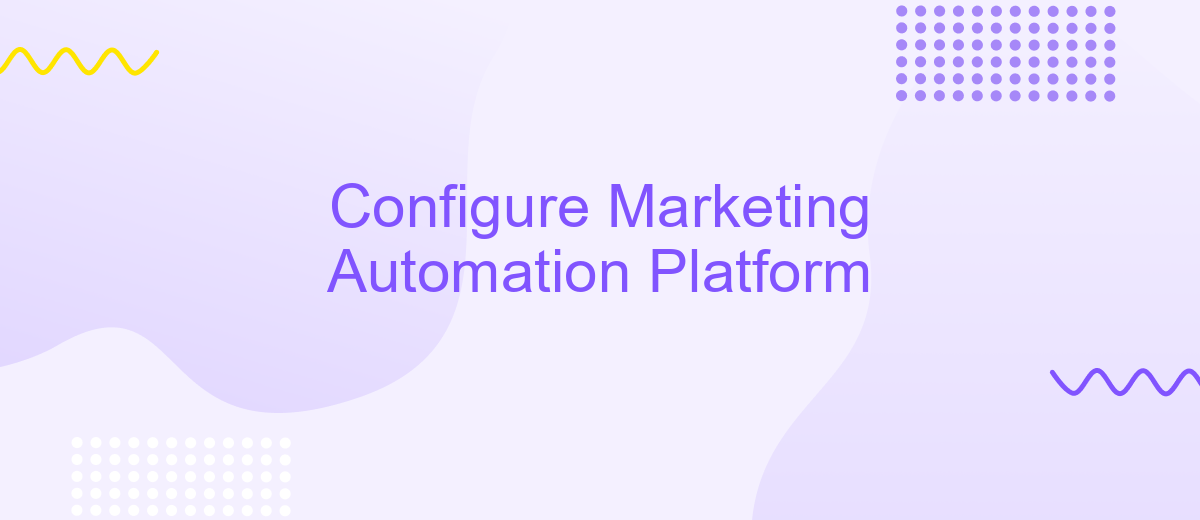Configure Marketing Automation Platform
In today's fast-paced digital landscape, marketing automation platforms have become essential tools for businesses aiming to streamline their marketing efforts and enhance customer engagement. Configuring these platforms effectively is crucial for maximizing their potential and ensuring seamless operations. This article delves into the key steps and best practices for setting up a marketing automation platform, enabling businesses to optimize their marketing strategies and achieve measurable results.
Understanding Your Marketing Goals and Objectives
Before diving into the configuration of a marketing automation platform, it's essential to clearly understand your marketing goals and objectives. This foundational step ensures that your strategies align with your business's overall vision and are measurable. By defining what success looks like, you can better tailor your platform to meet these specific targets, ultimately enhancing efficiency and effectiveness.
- Increase brand awareness and reach a broader audience.
- Generate quality leads that convert into loyal customers.
- Enhance customer engagement through personalized campaigns.
- Improve sales and revenue through targeted marketing efforts.
- Optimize marketing spend by analyzing campaign performance.
Once your goals and objectives are clearly outlined, you can leverage the full power of your marketing automation platform. This clarity allows you to configure features and workflows that directly support your ambitions, ensuring that every marketing initiative is purposeful and impactful. Regularly revisiting and adjusting these goals as your business evolves will help maintain alignment and drive continuous growth.
Choosing the Right Marketing Automation Platform

Choosing the right marketing automation platform is crucial for streamlining your marketing efforts and achieving your business goals. Start by identifying your specific needs and objectives. Consider factors such as the size of your team, your budget, and the level of technical expertise available. Evaluate the features offered by different platforms, such as email marketing, lead scoring, analytics, and CRM integration. It's important to ensure that the platform can scale with your business as it grows.
Integration capabilities are another critical aspect to consider. A platform that easily integrates with your existing tools and systems can save time and reduce errors. Services like ApiX-Drive can facilitate seamless integrations, allowing you to connect various apps and automate workflows without extensive coding knowledge. Additionally, assess the platform's user interface and customer support options, as these can significantly impact user experience and adoption rates. By carefully evaluating these factors, you can select a marketing automation platform that aligns with your business needs and enhances your marketing strategy.
Integrating Your Marketing Automation Platform with Existing Systems

Integrating your marketing automation platform with existing systems is crucial for maximizing efficiency and ensuring seamless data flow. This integration allows for a unified view of customer interactions, enhancing your ability to personalize marketing efforts. Start by evaluating the systems you currently use, such as CRM, email marketing, and analytics tools, to identify integration opportunities that will streamline your marketing processes.
- Identify key systems that need integration with your marketing automation platform.
- Consult with IT and marketing teams to understand technical requirements and limitations.
- Use APIs or third-party connectors to facilitate data exchange between systems.
- Test the integration thoroughly to ensure data accuracy and system compatibility.
- Monitor the integration regularly to address any issues and optimize performance.
By integrating your marketing automation platform with existing systems, you create a cohesive marketing ecosystem that enhances customer engagement and improves operational efficiency. This integration not only saves time but also provides valuable insights by consolidating data from various sources. Ultimately, a well-integrated system empowers your marketing team to make data-driven decisions and deliver more personalized customer experiences.
Setting Up Key Automation Workflows

To effectively harness the power of a marketing automation platform, setting up key workflows is crucial. These workflows streamline repetitive tasks, allowing your team to focus on strategic initiatives. Begin by identifying the core processes that can be automated, such as lead nurturing, customer onboarding, and post-purchase follow-ups.
Once you've pinpointed these processes, map out each step involved in the workflow. This mapping will serve as a blueprint for automation, ensuring that all necessary actions are included. Consider the triggers that will initiate each workflow, such as user sign-ups or specific behaviors on your website.
- Define clear objectives for each workflow to measure success.
- Utilize segmentation to tailor content to different audience groups.
- Incorporate personalization to enhance user engagement.
- Test workflows regularly to identify areas for improvement.
After setting up your workflows, monitor their performance through analytics and feedback loops. This ongoing evaluation will help you refine and optimize your strategies over time. By continuously improving your automation processes, you can enhance customer experiences and drive better results for your marketing campaigns.
Testing, Analyzing, and Optimizing Your Automation Strategy
Testing your marketing automation strategy is crucial to ensure its effectiveness. Begin by setting clear objectives and key performance indicators (KPIs) to measure success. Conduct A/B tests on different elements, such as email subject lines, call-to-action buttons, and timing, to identify what resonates best with your audience. Regular testing allows you to refine your approach and maximize engagement. Utilize tools like ApiX-Drive to streamline integrations and automate data flow, ensuring seamless communication between platforms.
Analyzing the results is the next step. Dive into the data collected from your campaigns to uncover insights about customer behavior and preferences. Look for patterns and trends that can inform future strategies. Once you have a clear understanding, focus on optimizing your automation efforts. Adjust workflows, personalize content, and refine targeting based on the insights gained. Continuous optimization is key to staying ahead in the ever-evolving marketing landscape, driving better results and enhancing customer experiences.
FAQ
What is Marketing Automation and why is it important?
How do I choose the right Marketing Automation Platform for my business?
What steps are involved in setting up a Marketing Automation Platform?
How can I integrate my Marketing Automation Platform with other tools?
What are common challenges faced when configuring a Marketing Automation Platform?
Apix-Drive is a universal tool that will quickly streamline any workflow, freeing you from routine and possible financial losses. Try ApiX-Drive in action and see how useful it is for you personally. In the meantime, when you are setting up connections between systems, think about where you are investing your free time, because now you will have much more of it.

